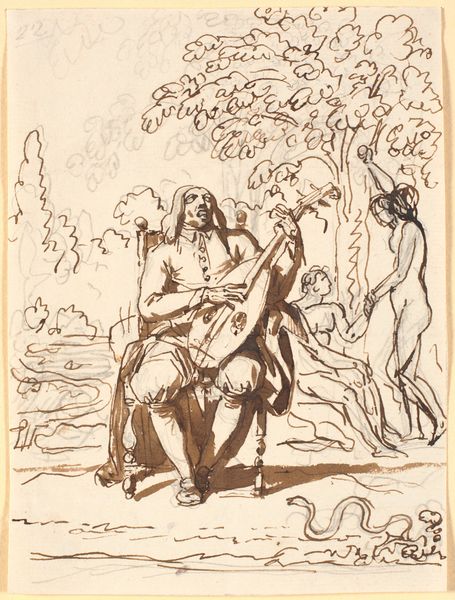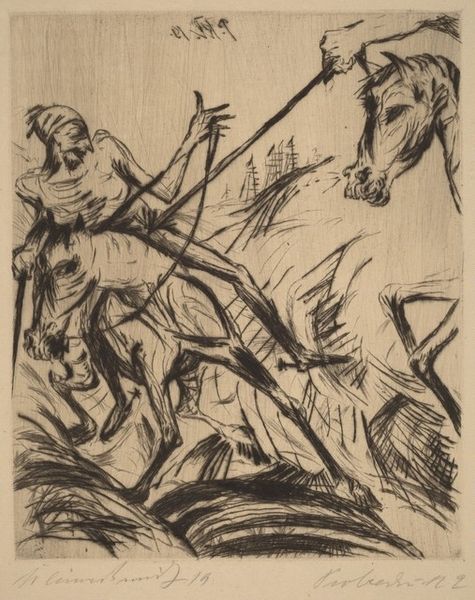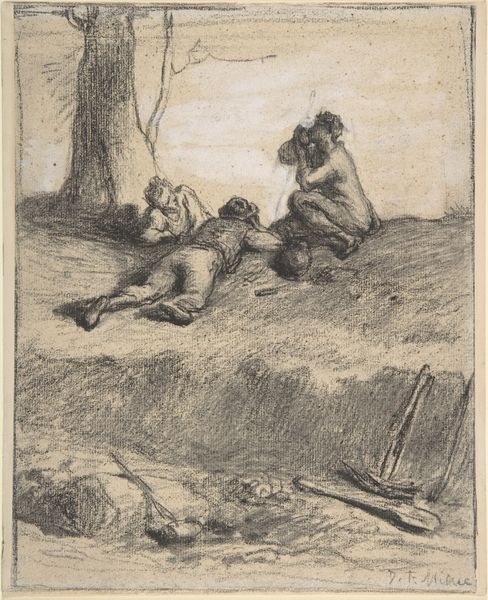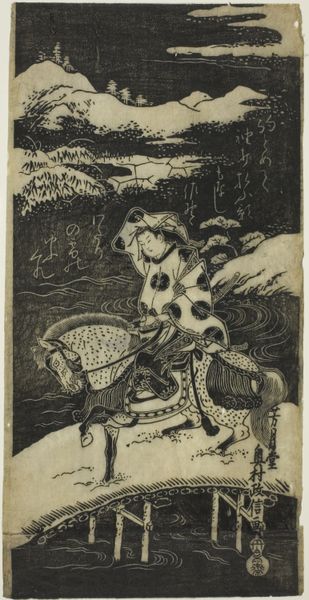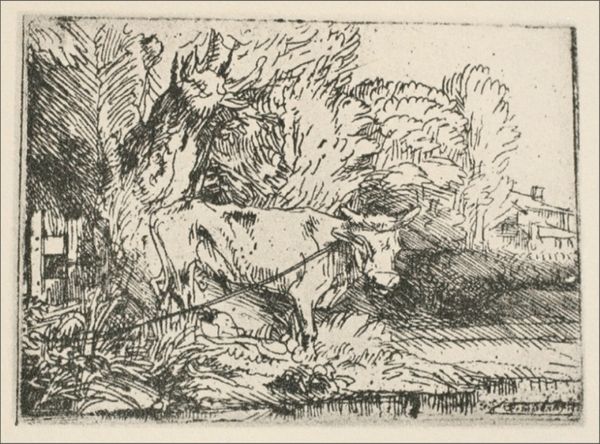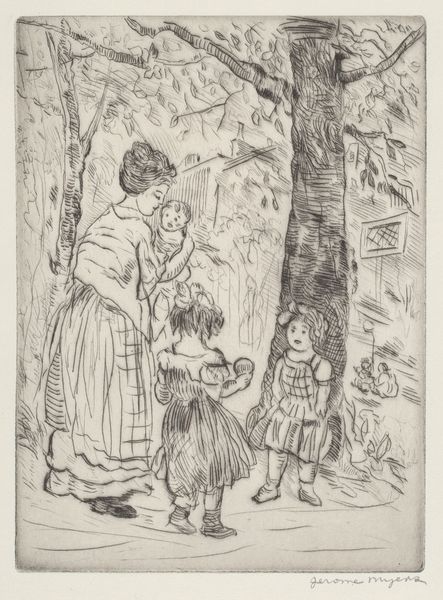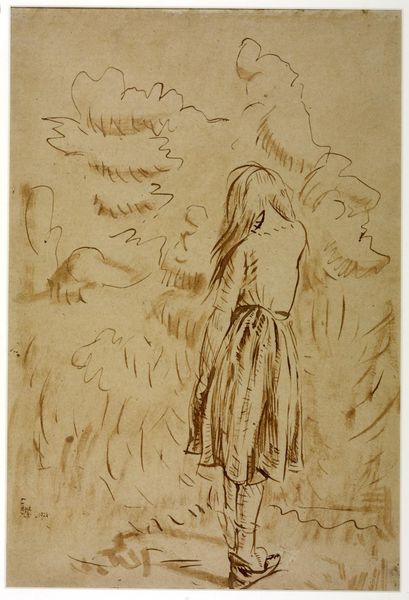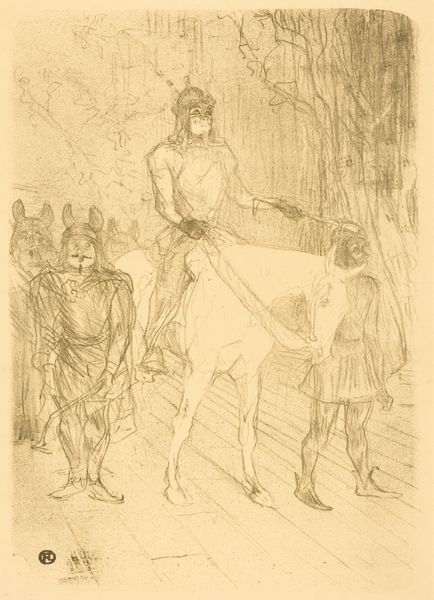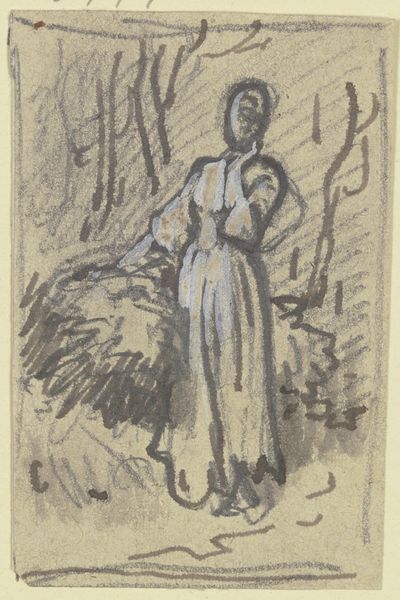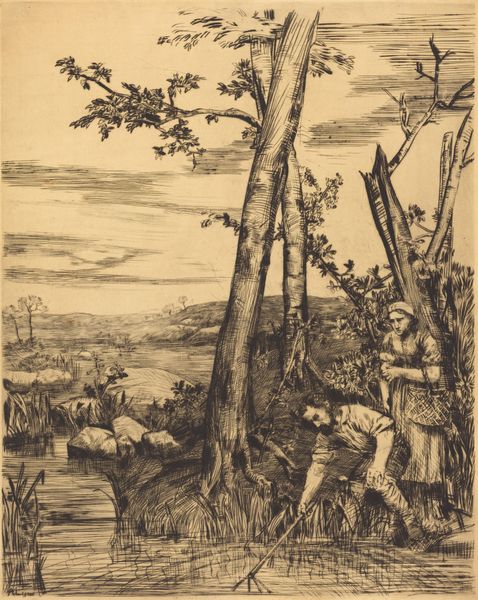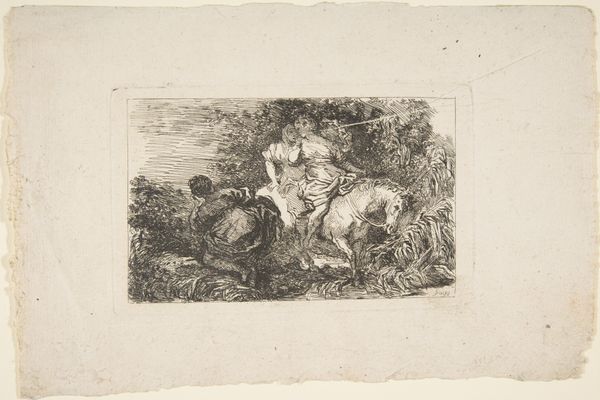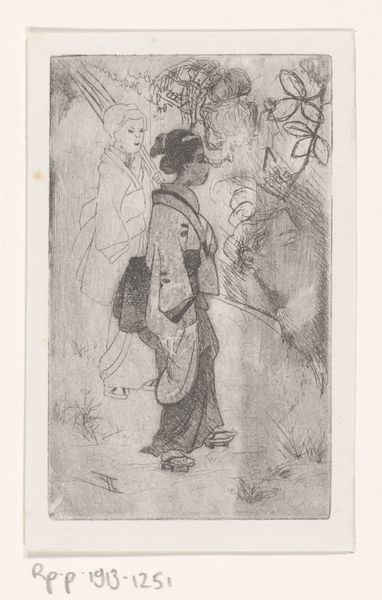
Dimensions: image: 305 x 149 mm sheet: 362 x 184 mm
Copyright: National Gallery of Art: CC0 1.0
Editor: So, here we have "A Pastoral," an etching by Frederick Stuart Church from 1881. It depicts a shepherdess with her flock, rendered in delicate lines. It feels very serene and almost dreamlike to me. What's your take on it? Curator: Well, immediately I am drawn to the etching process itself. The lines are achieved through a labor-intensive process, using acid to bite into a metal plate. Consider the accessibility of prints and drawings in this era versus painting – who was able to own art, and what kind? Editor: That’s an interesting point. I hadn’t considered the broader implications of printmaking. It definitely makes it more accessible than, say, an oil painting. Curator: Exactly. And think about the materials involved. The paper, the ink, the metal plate – each sourced and manufactured through specific social and economic networks. This isn't just a depiction of a romantic scene; it’s a product of industrial and commercial forces at play. How do these considerations shift our understanding of the idyllic scene presented? Editor: I guess it makes it less about pure aesthetic beauty and more about its role as a commodity. The pastoral setting almost becomes a selling point, something that could be reproduced and consumed. Curator: Precisely. We can trace the relationship between art, labor, and consumption by examining the material realities of its production. Editor: This has definitely given me a new perspective on how to look at art beyond just the visual. Thanks! Curator: My pleasure! Seeing art through a materialist lens offers us a critical approach, examining art as an object produced under specific conditions.
Comments
No comments
Be the first to comment and join the conversation on the ultimate creative platform.
